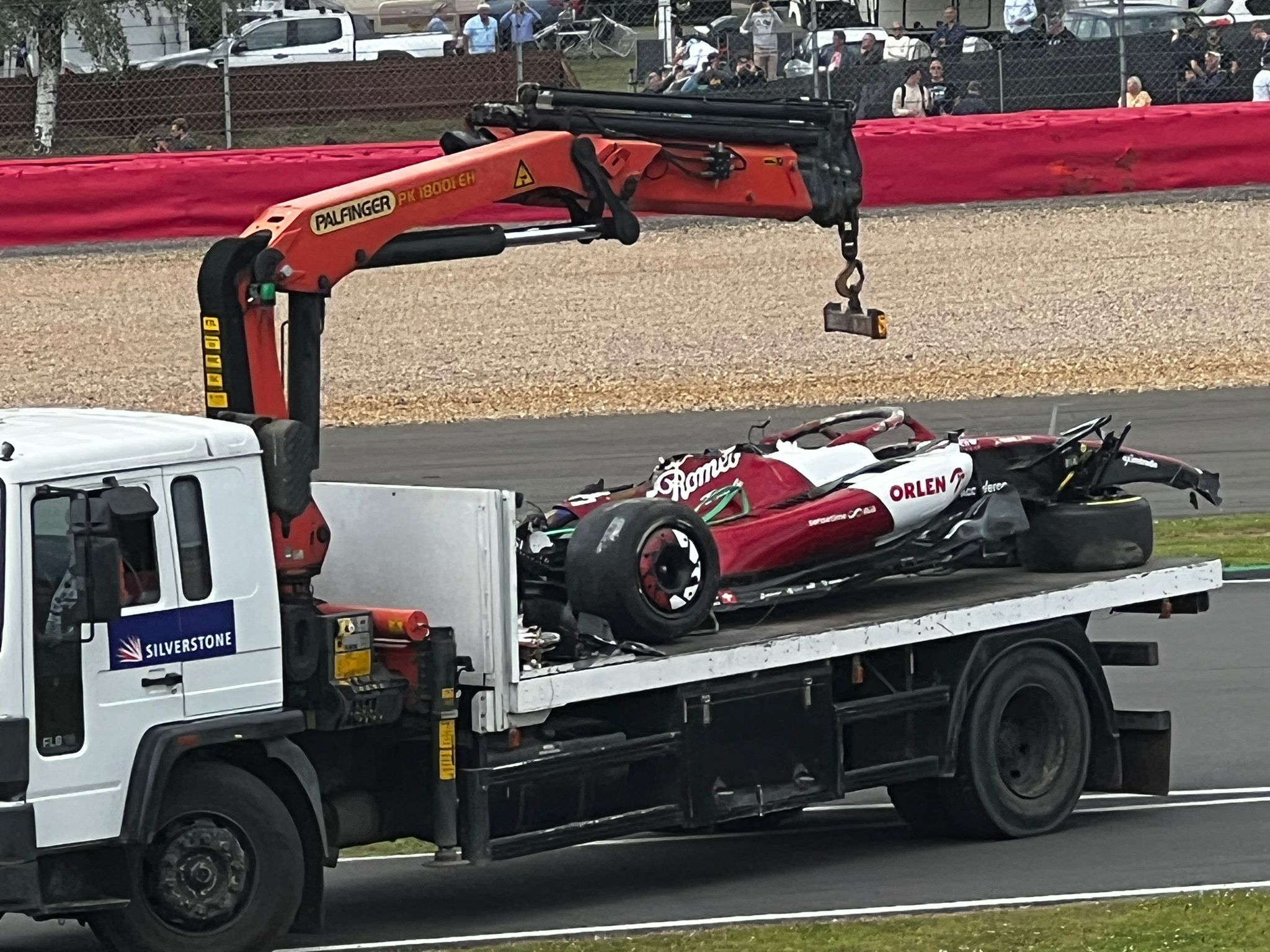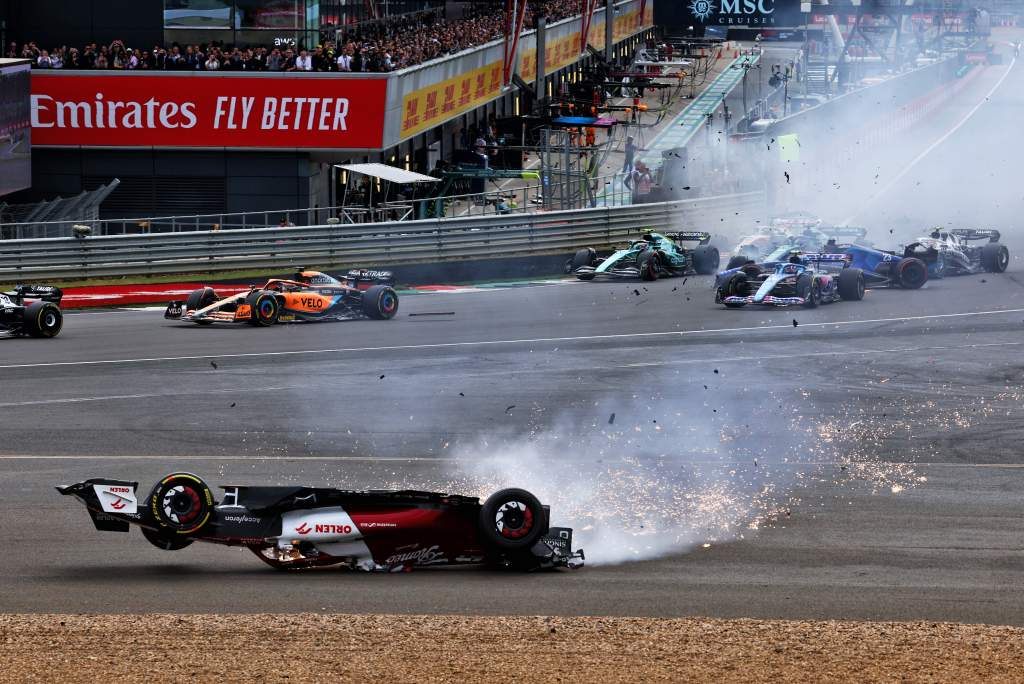Up Next

The FIA will introduce “more stringent measures” in Formula 1’s rollhoop regulations for 2023 following Alfa Romeo driver Zhou Guanyu’s accident at the start of the British Grand Prix.
This follows Thursday’s meeting of the technical advisory committee, which drew on the analysis of the Silverstone accident and resolved to take action to improve the rollhoop rules.
The nature of the more stringent measures has yet to be decided on, although the FIA is working on the modifications to the technical regulations.
A statement released by the FIA on the TAC meeting said it “discussed the serious incident involving Zhou Guanyu at Silverstone.
“The teams confirmed their availability to introduce more stringent measures on the rollhoops for 2023, and the FIA undertook to complete the relevant analyses, and to communicate to the teams new requirements for the safety of the rollhoop.”
Although details of the investigation into Zhou’s accident have not been released, it’s clear that what’s called the ‘primary roll structure’ suffered a failure during the crash.
F1 cars are required to have two roll structures, with the halo – that Zhou credited for saving his life – the secondary one.

The regulations for this govern the location and demands a minimum enclosed structural cross section of 10000mm2. The materials used are not dictated, but their performance in an accident is by the crash tests.
The primary roll structure is subject to a crash test that applies “a load equivalent to 60kN laterally, 70kN longitudinally in a rearward direction and 105kN vertically”.
The test only allows 25mm deformation along the loaded axis, with “any structural failure limited to 100mm below the top of the roll structure when measured vertically”.
There are therefore two broad areas where the FIA can take action. The first would be to modify the dimensional and structural requirements of the primary rollhoop regulations.
Currently, this allows either a single-spike design or a triangular concept – characterised by The Race’s technical expert Gary Anderson as “a bit like a double horseshoe”.
Alfa Romeo uses the single-spike design, while the rest of the teams use the double concept. Both are legal and Alfa Romeo’s design had passed all required load tests, but it’s possible the FIA could decide to mandate the double rollhoop structures. Changes could also be made to the dimensions of the primary roll structure.
Another approach would be to make the load tests more stringent, which could be achieved both by increasing the loads and modifying the way these are applied. This will likely be guided by the loads that analysis reveals Zhou’s roll structure was exposed to in the crash.
Most likely, the FIA will make changes to both aspects of the regulations, although this will be driven by the analysis of the crash data and its database of similar accidents in the past.
The resolution to make changes to the roll structure regulations reflects the FIA’s commitment to improving safety.
Grand Prix Drivers’ Association chairman Alex Wurz also called for action on the roll structure following the crash.
Despite the need to improve the primary roll structure regulations, Zhou escaped the accident without injury. Alfa Romeo team principal Frederic Vasseur said this was testament to the safety work of the FIA, in particular the introduction of the halo in 2018.
“He came back to the garage, one hour after the crash when he was released from the medical centre, and he had absolutely nothing [in terms of injuries],” said Vasseur. “The first question was about the stock of parts for Spielberg.
“When you think about this, if you suggested to have so huge a crash and to come back into the garage to have nothing, to be focused on the next [race], it’s unbelievable.
“On this, thanks to the FIA, thanks to the safety criteria.
“I wasn’t the biggest fan of the halo at the beginning, but I was wrong.”




